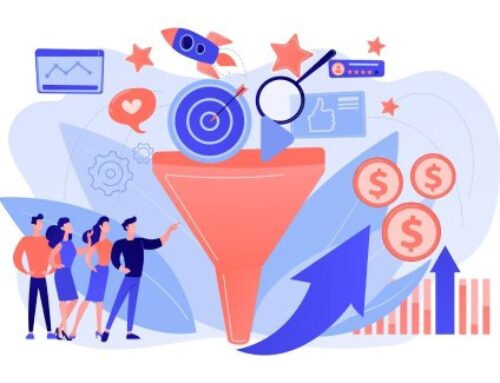
LinkedIn has become the go-to platform for professionals, businesses, and decision-makers. With more than 950 million users globally (and counting), it is a goldmine for B2B lead generation. But here’s the catch — while many sales leaders and founders swear by LinkedIn for lead generation, others try it, fail, and quickly abandon the platform altogether. Why? Because they’re making mistakes that sabotage their results.
If you’ve been dabbling in lead generation on LinkedIn, only to feel like it’s not working, this blog is here to save the day. Whether you’re a founder, CEO, CMO, or Head of Sales, avoiding these five common mistakes can significantly improve your chances of turning LinkedIn into a reliable lead funnel.
Mistake #1: Not Doing Sufficient Outreach
Think of LinkedIn’s outreach limits as a treasure chest you’re not fully unlocking. LinkedIn has daily and weekly restrictions on how many connection requests and messages you can send, but many professionals don’t even come close to maxing them out. Instead, they send a handful of connection requests, shoot out a message or two, and then wonder why leads aren’t pouring in.
Here’s the truth: LinkedIn lead generation is a numbers game. The more targeted outreach you do (without spamming, of course), the higher your chances of success.
Why Volume Matters
Unlike cold calling or traditional email marketing, lead generation on LinkedIn allows you to create personalized, relationship-driven connections. But you need to reach enough people to start seeing meaningful results. Imagine you’re at a networking event. Would you hang out in the corner and only talk to one or two people? Of course not. So why do that on LinkedIn?
Pro Tip
Use LinkedIn’s limits strategically. Depending on your plan (free, premium, or Sales Navigator), LinkedIn allows a specific number of connection requests and follow-ups daily. Maximize these limits every single day to expand your network and build a steady pipeline.
Mistake #2: Using Long, Email-Like Templates
This is a big one. Stop treating LinkedIn like your Gmail inbox! Long, drawn-out connection requests or follow-up messages full of jargon will almost always fall flat. People on LinkedIn aren’t looking for essays; they want quick, value-packed snippets that get to the point.
Why Long Templates Don’t Work
LinkedIn is a fast-paced platform where the average person spends just minutes per session, often on their phone. The last thing someone wants to do is scroll through a lengthy, email-style message filled with fluff.
Your outreach needs to feel authentic, conversational, and — here’s the key — brief. In fact, your messaging should be so concise that if someone is scrolling through on their lunch break or between meetings, they can respond without needing to overthink.
Pro Tip
Keep your message under 300 characters.
Personalize it by referencing something specific from their profile (e.g., their recent post, company, or mutual connections).
Focus on how you can add value to their business, not on selling your product or service right away.
Mistake #3: Insufficient Follow-Ups
Raise your hand if this sounds familiar: You send a LinkedIn message, don’t get a reply, and then… do nothing. If you’re guilty of this, you’re leaving money on the table. Following up isn’t just important; it’s essential.
Why Follow-Ups Work
Here’s a fact: Most people aren’t ignoring your message because they’re not interested. They’re busy! LinkedIn is often used on mobile devices, meaning your prospects could be reading your message while commuting, in between meetings, or while standing in line for coffee. Following up acts as a gentle (and much-needed) nudge to bring your message back to their attention.
But beware of going overboard. Nobody likes a pushy salesperson. The trick is to find the sweet spot: persistent yet polite.
Pro Tip
Space out your follow-ups (e.g., send one 3-4 days after the initial message and another a week later).
Keep follow-ups conversational and low-pressure, like: “Hey [Name], just following up on my earlier message. I’d love to hear your thoughts!”
Use a mix of text and voice notes to stand out.
Mistake #4: Getting Discouraged by “Nos”
Let’s face it: Rejection is part of the game. Whether it’s cold calling, emailing, or lead generation on LinkedIn, you’re going to hear “no” more often than “yes.” The problem? Many professionals take these rejections personally and give up far too quickly.
Why You Should Embrace “Nos”
Here’s a mindset shift: A “no” is not a failure. It’s feedback. It either means the person isn’t the right fit for your offer, or they’re not ready yet. The beauty of LinkedIn is that even if someone declines your pitch, you’ve still expanded your network and built some visibility in their circle.
Remember, LinkedIn is a long-term play. The person who says “no” today might circle back six months down the line when their needs change.
Pro Tip
Celebrate every “no” as a step closer to finding your ideal client. And don’t be afraid to ask questions like, “No worries at all! Would it be okay if I reached out again in the future?”
Mistake #5: Not Engaging Prospects Who Respond
Congratulations! Someone replied to your message. But what happens next? Many companies make the mistake of assigning a positive response to a frontline SDR (Sales Development Representative) or junior team member for follow-up. This can backfire.
Why Senior Stakeholders Matter
Think about it from the prospect’s perspective. They’ve just had a meaningful message exchange with a senior stakeholder (e.g., the founder or head of sales). Suddenly, they’re being handed off to someone who lacks context or authority. This creates a jarring experience and can erode trust.
Instead, ensure that the senior person who started the conversation stays engaged until it’s time for a formal handoff, such as a scheduled meeting or demo. This maintains continuity and signals to the prospect that you value their time and interest.
Pro Tip
Use a CRM to track LinkedIn interactions and ensure seamless handoffs only when absolutely necessary.
If you must involve an SDR, make the introduction warm and personal: “Hi [Name], I’m looping in [SDR Name], who will assist you further while keeping me in the loop.”
Wrapping Up
LinkedIn is an incredibly powerful tool for B2B linkedin lead generation, but it’s not a magic wand. Getting results requires consistent effort, great messaging, and the ability to learn from mistakes. By avoiding these five pitfalls — insufficient outreach, long templates, lack of follow-ups, discouragement from rejection, and poor handoffs — you’ll be well on your way to unlocking the true potential of LinkedIn lead generation in India or anywhere else in the world.
Remember, LinkedIn isn’t just about generating leads; it’s about building relationships. The more authentic and strategic your efforts, the better your results.
So, the next time you’re wondering why your LinkedIn strategy isn’t working, revisit this list. And when in doubt, just keep going. Success might be just one connection away.



